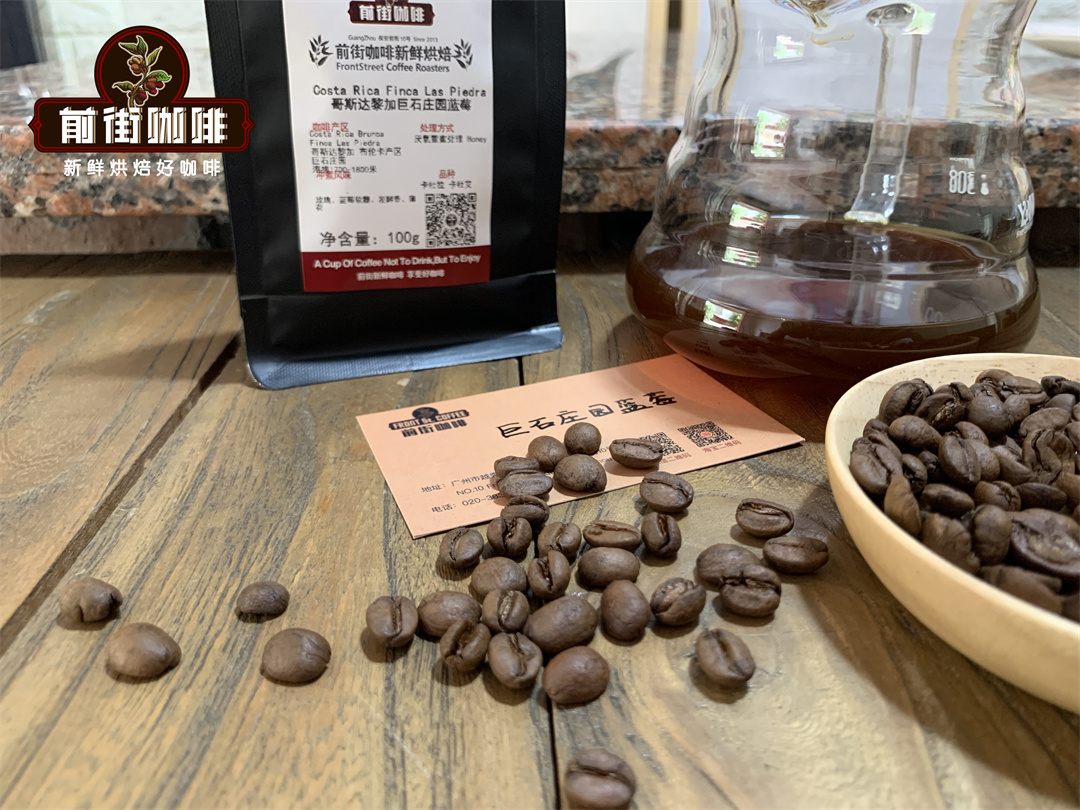Relationship between hardness of Costa Rican boutique coffee beans and growth altitude
Speaking of Costa Rica coffee, perhaps some people will not know or familiar with it, but speaking of musicians Beethoven should be no one does not know it, in the front street coffee, Beethoven, Mozart, Bach is produced from Costa Rica's musicians series of fine coffee, widely loved by coffee people.
A highly rated Costa Rican coffee, usually coffee plant variety Caturra (Coffea arabica var. caturra) and sometimes Catuai, with excellent body, usually full, and rich, intense flavors and crisp acidity. Costa Rica's best high-growth coffees in particular are outstanding, known for their good body and fruity flavors as well as bright acidity and clean, refreshing taste.
growth region
Costa Rica is a relatively narrow country, flanked by the sea, with a long coastline, but still reaching the ideal elevation for coffee cultivation.
Costa Rican "Tarazu" Coffee
The Tarasu County area produces some of the best Costa Rican coffee on a consistent basis around. The capital of San Marcos is about 1,350 meters above sea level, but the surrounding mountains are 1,700 meters high, so the altitude is very high and the best coffee can be developed. Tarasu is located in the mountainous interior of the country, with the lowest elevation of 1,200 meters, and the best coffee in the region is known for its relatively heavy body and complex aroma. Almost all Tarrazu coffee is strictly high-grown.
San Marcos de Tarrazu is especially known for producing outstanding coffee. La Minita Coffee Farm in Tarazu is known for its highly rated Arabica coffee.

varieties
Other coffee plant varieties grown in Costa Rica include Caturra (known for producing rich, bright coffee), Catuai and Mondo Novo.
Costa Rica's green coffee grading system is based on altitude and graded by hardness, which is affected by altitude. More precisely, it is influenced by the time it takes coffee cherries (fruits) to ripen on the coffee plant. In general, higher areas produce denser, harder coffee beans, which are considered better. Local brokers and distributors in the region work with green coffee importers to bring unroasted coffee into the United States and Canada. It is then sold in 132-pound bulk coffee bags to large coffee roasters.
Costa Rican coffee is also generally available through fair trade and organic certification. Rainforest certification is also popular in Costa Rica.
The Costa Rican classification system includes the following categories:
Strictly High Grown (SHG) / Strictly Hard Beans (SHB), grown at altitudes above 1,200 m;
Good hard beans (GHB), grown between 3,300 feet (1,000 meters) and 3,900 feet (1,200 meters) above sea level, and
Medium hard beans (MHB) grow between 500 and 900 meters above sea level.
Important Notice :
前街咖啡 FrontStreet Coffee has moved to new addredd:
FrontStreet Coffee Address: 315,Donghua East Road,GuangZhou
Tel:020 38364473
- Prev

Grading of Kenyan boutique coffee beans what do you mean by AA, AB and PB in Kenyan coffee
Coffee is graded when it is still raw before roasting. Any coffee tree can produce all grades of coffee, from E to C, and then sort by size. This is done for consistency in baking, because beans of similar size are baked at a similar rate, while beans of different sizes are baked unevenly (for example, more
- Next

Ethiopian Yerga Shefi Coffee Yerga Shefi Coffee is suitable for espresso
Known for its sweetness and aroma, it has a light to medium body. Ethiopian Yirgacheffes are sweet and aromatic, often reviewed and rated as some of the best Arabica coffees in the world. Their reputation for quality usually means they are expensive, but even so they are better than other competitors such as Hawaiian Kona and Jamaica Blue Mountain Coffee
Related
- Detailed explanation of Jadeite planting Land in Panamanian Jadeite Manor introduction to the grading system of Jadeite competitive bidding, Red bid, Green bid and Rose Summer
- Story of Coffee planting in Brenka region of Costa Rica Stonehenge Manor anaerobic heavy honey treatment of flavor mouth
- What's on the barrel of Blue Mountain Coffee beans?
- Can American coffee also pull flowers? How to use hot American style to pull out a good-looking pattern?
- Can you make a cold extract with coffee beans? What is the right proportion for cold-extracted coffee formula?
- Indonesian PWN Gold Mandrine Coffee Origin Features Flavor How to Chong? Mandolin coffee is American.
- A brief introduction to the flavor characteristics of Brazilian yellow bourbon coffee beans
- What is the effect of different water quality on the flavor of cold-extracted coffee? What kind of water is best for brewing coffee?
- Why do you think of Rose Summer whenever you mention Panamanian coffee?
- Introduction to the characteristics of authentic blue mountain coffee bean producing areas? What is the CIB Coffee Authority in Jamaica?

